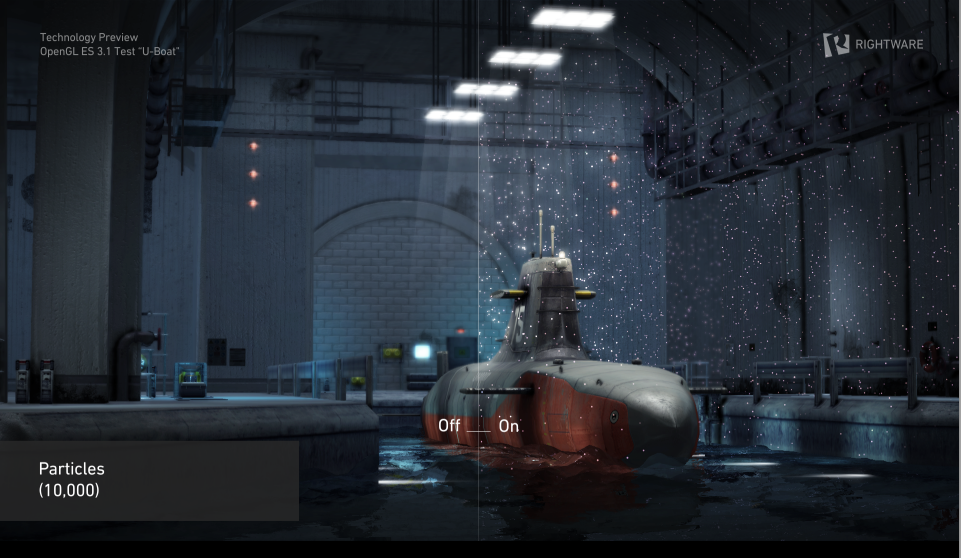Rightware Showcases OpenGL ES 3.1 Benchmark Demo At Siggraph 2014
At Siggraph 2014, Rightware -- a benchmarking company known for building its cross-platform graphics tests on top of a real-world graphics engine like Unity -- showed off its latest test, which takes advantage of the new OpenGL ES 3.1 spec. Everyone in the mobile GPU market, except for Qualcomm, is shipping an OpenGL ES 3.1-compatible GPU at this point.
Nvidia has the Tegra K1, which of course supports many more graphics features than the ones found in OpenGL ES 3.1 thanks to its support for the full OpenGL 4.4/4.5, and ARM can support it on all of its “Midgard” GPUs (T6xx series). Imagination supports OpenGL ES 3.1 on all of its PowerVR Series6 GPUs, and all of Intel's HD GPUs for Android do as well. Even though Qualcomm isn't currently shipping a GPU that supports OpenGL ES 3.1, the company's upcoming Adreno 420 GPU will.
Because almost everyone seems to be supporting OpenGL ES 3.1 already or is going to soon enough, it’s no surprise that Rightware wants to release a graphics test for its benchmark suite that can evaluate the GPU performance of these chips while running an OpenGL ES 3.1 demo. Rightware is calling this test the “U-Boat”, and you can watch it below:
Rightware seems to be taking advantage of many new features from OpenGL ES 3.1 that has allowed it (and many mobile game developers as well) to minimize driver overhead -- quite a popular trend with graphics API’s lately, including AMD’s Mantle, Apple’s Metal, OpenGL NG and DirectX12) -- and deliver higher complexity and higher-quality graphics compared to previous OpenGL ES versions.
The new features of OpenGL ES 3.1 include:
Deferred Lighting with Alpha BlendingWater physics simulation using compute shadersScreen space Ambient occlusion using compute shadersIndirect RenderingParticle EffectsParallax Mapping and Normal MappingMulti-pass water reflectionsCube map reflectionsCompressed textures with ETC2Depth of fieldBloom shadingMulti-sample anti-aliasing
One other advantage of OpenGL ES 3.1 is that it maintains full backwards compatibility with OpenGL ES 2.0 and 3.0. It’s also fully included in the new OpenGL 4.5, which means that if a developer writes an OpenGL E 3.1 game, the game could be easily ported to any GPU that supports OpenGL 4.5 without drastic changes. This may seem straightforward enough, but this is actually a relatively new “feature” in the full OpenGL API, as it only started fully supporting OpenGL ES beginning with OpenGL 4.3 a couple of years ago. The two APIs were fairly incompatible with each other before that, despite their similar names.
Get Tom's Hardware's best news and in-depth reviews, straight to your inbox.
Rightware’s new graphics test should appear in its benchmarking suite sometime in Q4 this year. The test should make it easier for us to decide which hardware is good enough to handle the upcoming OpenGL ES 3.1 games with all of these nice features.
Follow us @tomshardware, on Facebook and on Google+.
Lucian Armasu is a Contributing Writer for Tom's Hardware US. He covers software news and the issues surrounding privacy and security.
